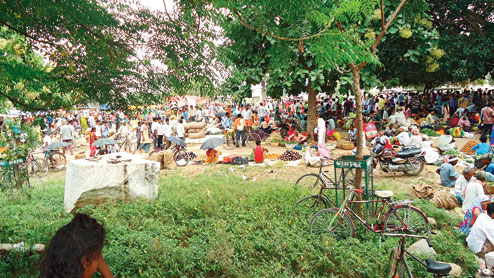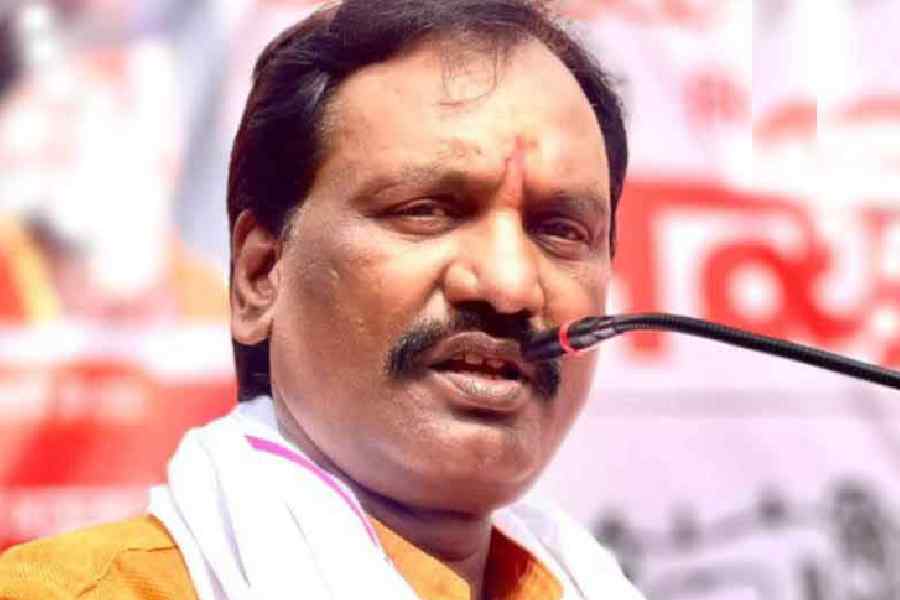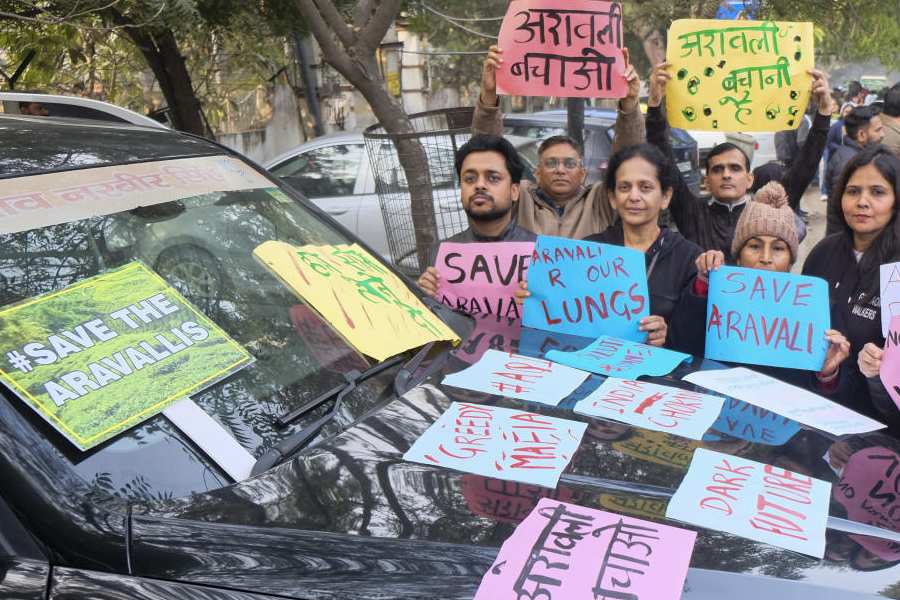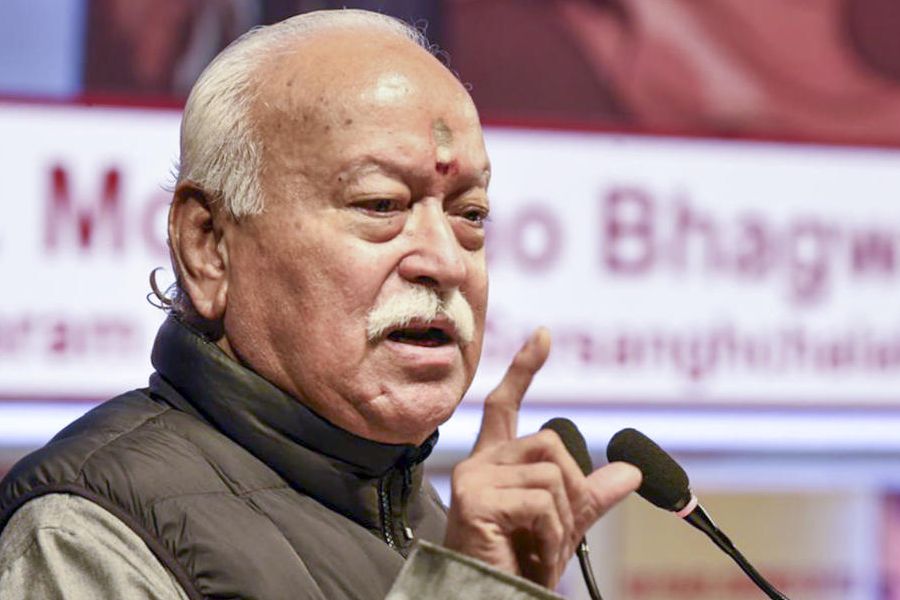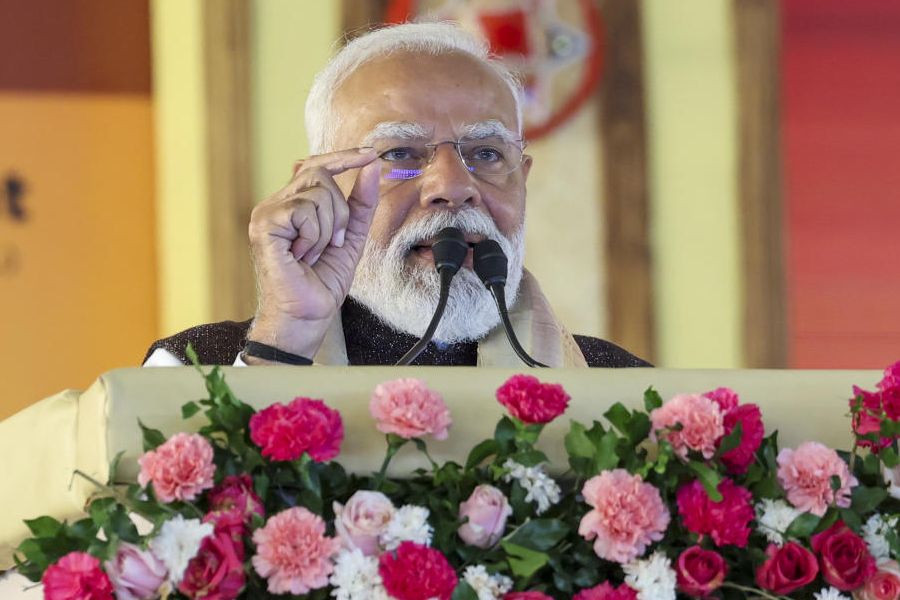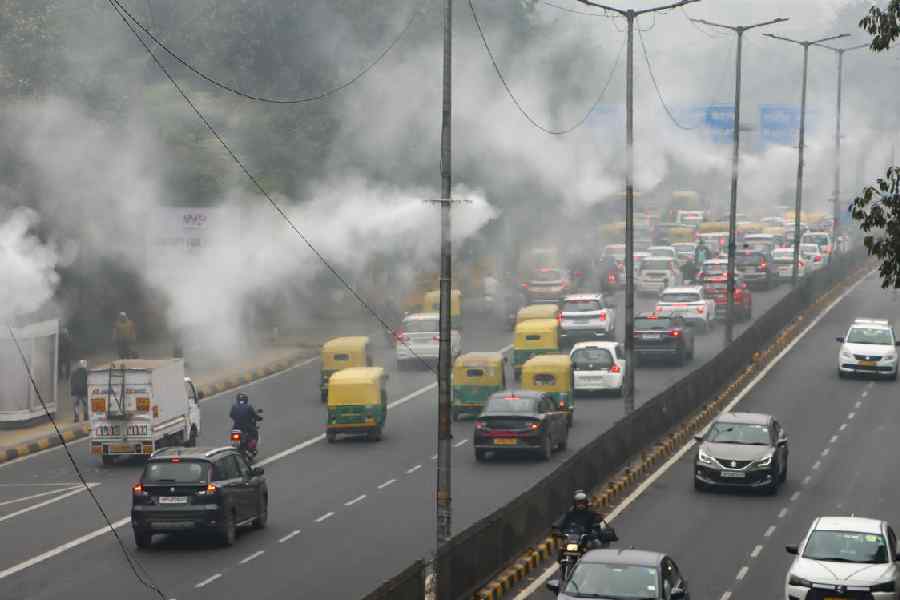When Jitan Ram Manjhi was “forced” to quit as chief minister in February, the BJP tapped him, seeing in the Mahadalit-Musahar leader the X factor needed to take on Nitish Kumar.
That the BJP’s strategists thought Manjhi would avenge his humiliation at the hands of Nitish by carving out 12 per cent of the state’s Mahadalit votes from the JDU-RJD-Congress Grand Alliance became evident when Narendra Modi honoured the ousted chief minister at the Prime Minister’s 7 Race Course Road residence in New Delhi.
Pinning hope on Manjhi’s “potential” to shake up Nitish’s Mahadalit constituency, which the Bihar chief minister nursed so assiduously in his 10-year reign, the Prime Minister launched his first Parivartan Rally from Muzaffarpur in north Bihar. He dwelt at length on how much he was pained at a Mahadalit leader’s “humiliation” by an “arrogant” Nitish.
But conversations with Mahadalits in scores of villages on the Gaya-Makhdumpur-Jehanabad highway indicate Manjhi might not be a “pied piper” for the community. “What has he (Manjhi) done for us? Why should we leave Nitish, who has done so much for us, to vote for Manjhi? The Grand Alliance candidate, Subedar Das (RJD), too is a Mahadalit and has a clean image,” said Mukesh Das (25), a Mahadalit at Chatar village near Makhdumpur, around 100km south of Patna.

In fact, Manjhi seems to be battling for survival in Makhdumpur, the Assembly constituency in Magadh region, which he won for the first time in 2010 after it was reserved for Scheduled Castes (SCs) in 2009.
His caste-men, the Musahars — constituting barely 2 to 3 per cent of the state’s voters — sounded sympathetic to Manjhi. But Chamars, Dhobis, Bhuinya, Binds, Rajvanshis and other Mahadalit castes seemed to favour Nitish.
Paradoxically, what seems to favour Manjhi is the support of upper caste Bhumihars, who constitute about 40,000 of Makhdumpur’s voters.
The BJP’s upper caste support base — which has for years been at war with Lalu — is expectedly backing Manjhi. But what, apparently, queers Manjhi’s pitch against the RJD candidate here is the presence of around 35,000 Yadavs, 25,000 Muslims and a sizeable number of Dangis, an EBC group that seems to favour a Nitish-Lalu combination over a BJP-led NDA.


Nitish commands better “goodwill” than Manjhi across castes and communities in the region. Even the ones who are not voting for the Grand Alliance are not openly criticising Nitish. “Bhale hi hum Nitish ko vote nahin dengein, Manjhi ko dengein (Maybe we will vote for Manjhi and not Nitish), but the roads in our village, the newly built high school and increased power supply are all Nitish’s gifts. His only crime was joining hands with Lalu,” said Vijay Sharma (45), a Bhumihar in Bhumihar-dominated Akopur village. But the disenchantment over Nitish joining hands with Lalu is confined to the upper castes, who are traditionally BJP supporters. “It is good that Nitish and Lalu have come together. Now Yadavs, Koeris, Kurmis and all backward castes will vote together in favour of the alliance,” said Jitendra Yadav of a Yadav-dominated village in Jagpura panchayat.
Conversations with a cross section of Yadavs, Kurmis, Koeris and other backward castes indicated that Kurmis (Nitish’s caste-men) and Yadavs (Lalu’s caste-men) aren’t really at daggers drawn. Perhaps the Nitish-Lalu reunion after nearly 20 years of bitterness helped in ironing out conflicts among Kurmis, Yadavs and Koeris, backward castes who benefited equally from the Mandal Commission.
Not surprisingly, Lalu has equated the reunion between him and Nitish as the “era heralding Mandal Raaj II”.
Though it battled Maoists for a large part of the years from the 1970s to the 1990s, Makhdumpur — so named after a famous medieval-age Sufi saint called Baba Makhdum — has relatively been a happy and peaceful constituency. Motorable roads, school buildings and irrigation facilities dot its hinterland.
“Maoists had carried out one of the biggest massacres at Bara village, 35km from Makhdumpur. Dalits, organised by the Maoists, and Bhumihars under the Ranvir Sena fought a pitched battle for decades. But there is peace now. Through his government-at-your-doorstep programme and reservation for Dalits, Mahadalits and EBCs, Nitish gradually brought all disgruntled elements into the mainstream,” said Aurangabad mukhiya Sanjay Singh, an upper caste Rajput.
Despite Lalu and Manjhi standing at two ends of the divide on Bihar’s political firmament, they have much in common.
While Lalu has fielded his sons Tejaswi and Tej Pratap in Raghopur and Mahua seats of north Bihar, Manjhi’s son, Santosh Kumar Suman, is contesting the Kutumba seat as an NDA nominee and Manjhi’s son-in-law, Devendra Manjhi, is an Independent candidate from Bodhgaya. But Santosh and Manjhi appear trapped in similar difficult battles while Devendra is battling to be counted as a serious contender.
Makhdumpur, Kutumba and Bodhgaya vote on October 16

